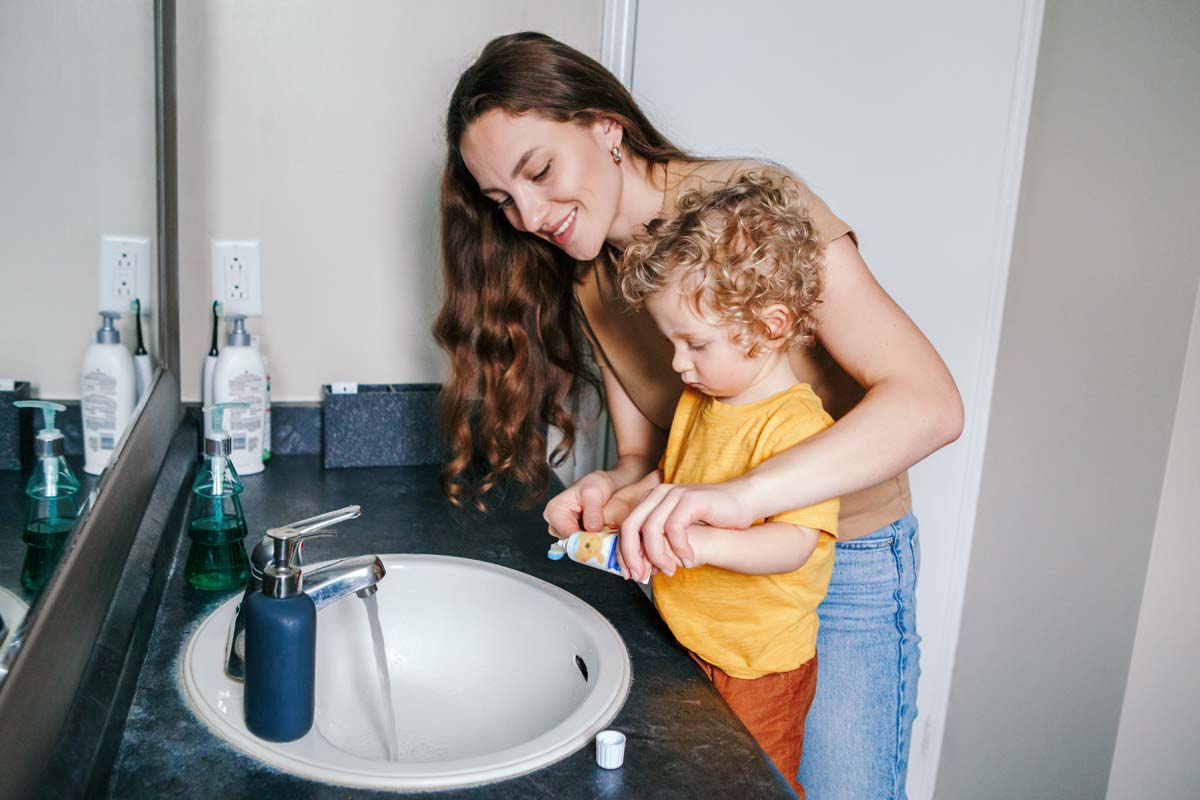“Everything in its place and a place for everything” isn’t just a saying Grandma cross-stitched on a pillow. It’s also the best of the kitchen organization tips you can apply. For most people, though, an organized kitchen is a dream to be achieved someday after retirement when the kids have moved out and life is less hectic. Reversing years of bad organization habits seems like too daunting a task to ever really tackle.
But it is possible to keep the heart of your home clear of clutter without spending weeks on boring cleaning projects. It’s time to stop procrastinating, be honest about what you really need, and reclaim the space you use to cook meals and enjoy time with family and friends. Here are our top nine kitchen organization tips to try today.
1. Start by reflecting on how your family uses the kitchen
Today’s kitchen isn’t just for food storage and cooking. It’s often part of your living area and is a multi-purpose space.
Consider all the functions your space serves. You might have a sitting area off the kitchen that comes in handy for entertaining. Does part of your kitchen end up being used as a workspace? Write down the ways that you use the area to ensure that your kitchen organization accommodates the needs of your family.
Here are some common uses for kitchens to think about:
- Create a place to store items used when entertaining. From a bottle opener and wine glasses to coasters and serving trays, select an accessible spot for your things so it’s easy to welcome friends and family.
- If your dining area is combined with your kitchen, keep placemats and napkins in an easy to reach spot so little hands can help set the table while you cook.
- If your kitchen island is often turned into a game area or homework zone, keep favorite games in a nearby cabinet or have a bin with pencils, pens, and notebooks easy to grab.
2. Think like a minimalist
Your first step toward kitchen freedom is to give the whole space an objective assessment. Forget about any sentimentality attached to the items you’ve kept all these years, and give serious thought to what you actually use on a regular basis.
Take a cue from minimalists, people who do their best not to acquire more than they need and to get rid of anything lacking a clear purpose. Apply this logic to your kitchen by:
- Setting aside your most-used tools and appliances.
- Identifying duplicates.
- Determining which single-function items can be replaced or tossed.
- Throwing out old, broken, rusty, or hopelessly dirty items.
- This gives you a starting point to work from as you create a plan of attack to organize your kitchen space.
3. Emphasize ease of use
Every kitchen has a few key items used to prepare and eat meals on a regular basis. Put the items you use most in easy-to-reach places to keep from tossing everything out of the way to get to that one bowl you need. Remember the old rule: “Like goes with like,” a key philosophy when it comes to storage units.
Make it as easy as possible to find your favorite items by storing dishes in one place and cups in another, and putting similar preparation tools together. This not only speeds up meal prep and table setting but also streamlines the appearance of your kitchen.
4. De-Clutter drawer space
As you’re rearranging the items you use most to keep the kitchen organized, you’ll inevitably run across clutter in drawers, including the ubiquitous “junk drawer.” Take the opportunity to clear out the messes you find as part of your overall cleaning strategy.
If you need to pop out to the store to grab some inexpensive drawer organizers, do it. These simple plastic or wooden inserts can turn even the messiest drawer into a neat and tidy space. Get one for silverware and another for everyday items such as tape, twist ties, and rubber bands.
Some utensils take up too much space when stored in drawers. Big items such as ladles and potato mashers are better kept on a mounted wall rack or simple suction hangers stuck to the side of a cabinet.
5. Categorize cabinets for better kitchen organization
Keeping with the “like goes with like” rule, move on from the drawers to the cabinets. Pick logical spots for plates, glasses, and mugs, and place all the similar items together. Organizing in this way will unearth some things you haven’t seen in years. If you find something you have little or no memory of using, ask yourself these questions:
- Do you really need or even want promotional items from companies you rarely do business with?
- Will you ever use “kiddie” dishes and cups again?
- Is there any reason to keep lids with no matching pots?
- Which items can be donated or given away to clear out more cabinet space?
This keeps you in the minimalist mindset and allows you to let go of items you have no reason to keep without the nagging feeling that you might use them at some unforeseeable time in the future.
6. Power up your shelving
Now that you’ve sorted through most of the overwhelming volume of stuff in the kitchen, you should have a good idea of what items you’re going to keep. It’s time to turn your attention to the shelves and see how best to organize this space in your kitchen.
Open shelving creates a sense of light and space and gives you a place to showcase your everyday dishes when not in use. Mix in decorative, functional items like cookbooks, gourmet olive oils, and flowers for an attractive display. Make sure you give these shelves a good wipe-down at least once a month to address dust, grease, and grime.
If you don’t have the space for an open shelf unit, make an effort to empty space on the shelves you do have. Use decorative plates, potted plants, or small appliances to break up larger groups of items and improve the appearance.
7. Make the most of your storage
If your kitchen has deep storage drawers, roll-out shelves, or a swing-out pantry, organizing your kitchen will be a breeze. But don’t panic if your kitchen is not outfitted with these great storage hacks. You can easily find perfect kitchen organization solutions that will help make life easier.
Shelf inserts can be used to create additional storage space, cookware organizers make it easy to grab the pan you need, and a tiered organizer helps keep things visible and organized.
8. Consider the countertops
Your countertop can make a big difference in the way you feel about your kitchen. Clutter-free counters make preparing food and cooking meals easier, and they reduce the possibility of accidents. They also improve the visual appeal of the space.
These kitchen organization tips can help you tidy your counter space:
- Clean up the sink and counter as soon as possible after preparing food.
- Store containers of flour, sugar, and other dry goods in cabinets or the pantry.
- Consider moving knives out of large wooden blocks and into drawers.
- Put away small appliances, such as the toaster, when not in use.
- If you don’t have the option of putting everything out of sight, consider mounting as many things off the counter as you can. By mounting things off the counter, the area still appears less cluttered and gives you more space to work when cooking.
9. Make a seasonal storage plan
You don’t need the cookie jar you only use for one month around Christmas cluttering your in-home storage space all year long. Get it out of the kitchen along with those holiday dish towels and fancy serving platters and into a shed or self-storage unit. Keep an eye out for other holiday-specific items, such as cookie presses or candy molds, and store them somewhere else until you actually need them.
When the holidays roll around, get what you need out of storage and wash it thoroughly. Find a good temporary spot for it in the kitchen, and put it back into storage as soon as you no longer need it. Leaving seasonal items out for too long can start the cycle of clutter all over again.



